Pilea are beautiful, easy care houseplants, but they can have some issues. Let’s talk about pilea peperomioides leaves curling and how to fix it!
Pilea is a cool houseplant with bright green lily pad-like leaves. It is originally from China and was brought by missionaries to Europe.
Pilea Peperomioides is also known as:
- Chinese money plant
- Coin plant
- Chinese coin plant
- UFO plant
- Friendship plant
- Missionary plant
- Pancake plant
Pileas are generally very easy to care for and keep happy. Plus, they put out baby plantlets and can be divided and shared with friends – hence the nickname Friendship Plant!
Even if these plants are easy to care for, they can have some frustrating problems. Today we are going to char about pilea leaves curling and what that means for your plant!
Check out all of the most common pilea problems and my recommendations for them here!
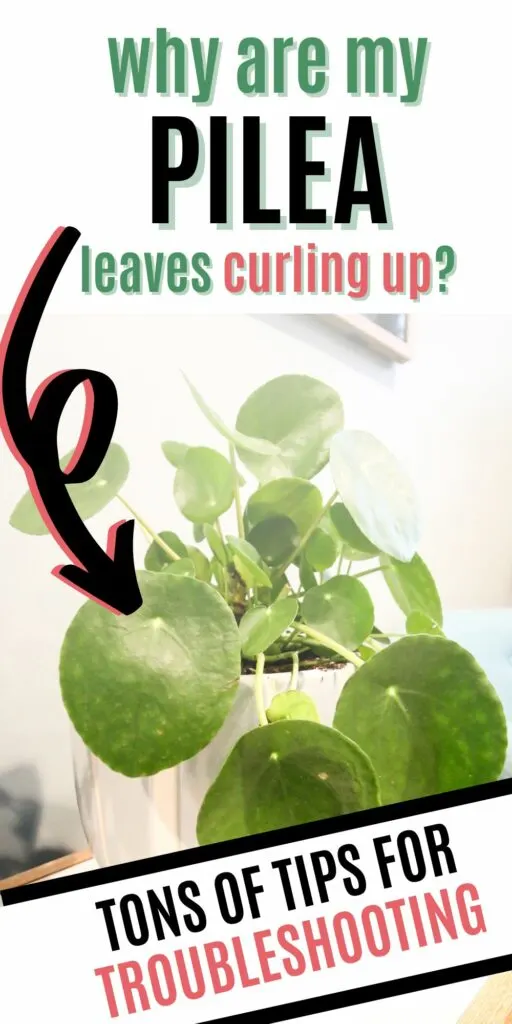
Why are my pilea peperomioides leaves curling?
In most cases, curling pilea leaves indicated that there is a water problem. Leaves are mostly made of water, so if the plant is too dry, that can lead to pilea curling leaves.
That water problem could mean a watering problem, or it could also mean that the plant is too hot and therefore drying out!
There are two types of leaf curling in pilea plants:
Leaves curling inwards – cupping
If your money plant leaves are curling upwards and forming little cups, this ususally means that the plant is soggy. That could indicate over watering, poor drainage, root rot, or low light.
Leaves curling outwards – doming
If your Chinese money plant leaves are curling downwards and forming domes, that usually indicates dryness. This could be caused by under watering, lack of humidity, too high of temperatures, too much of a draft. It can also be caused by lack of nutrients.
There are a lot of potential causes. Let’s get into them.
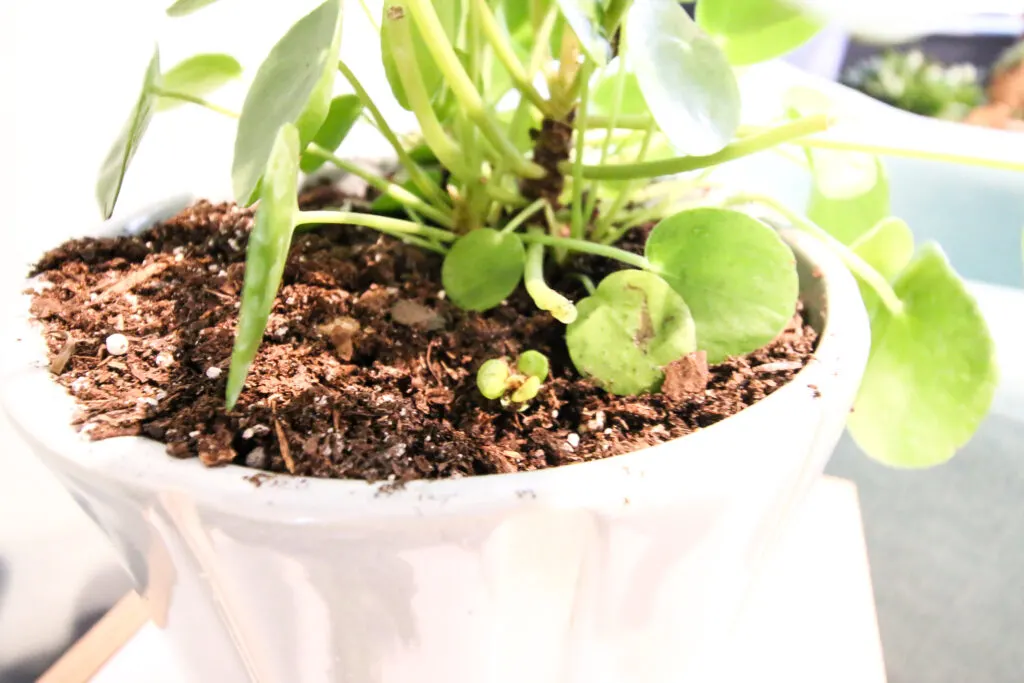
New leaves
New leaves curling? Don’t panic! It’s natural for new leaves to take a little while to unfurl. This is 100% normal for pilea plants.
Over watering
Over watering will make your plant sad. Plants absorb water and oxygen through their roots. Too much water in the soil means the roots can’t get any oxygen and will suffocate and die.
If your roots start cupping upwards, that could indicated that your plant is over watered. The plant might also get yellow leaves, drop leaves, or get black mushy spots on the leaves.
Check your soil – if it is very wet, the plant is over watered.
Be sure to add drainage to the pot and let the plant dry out more between waterings.
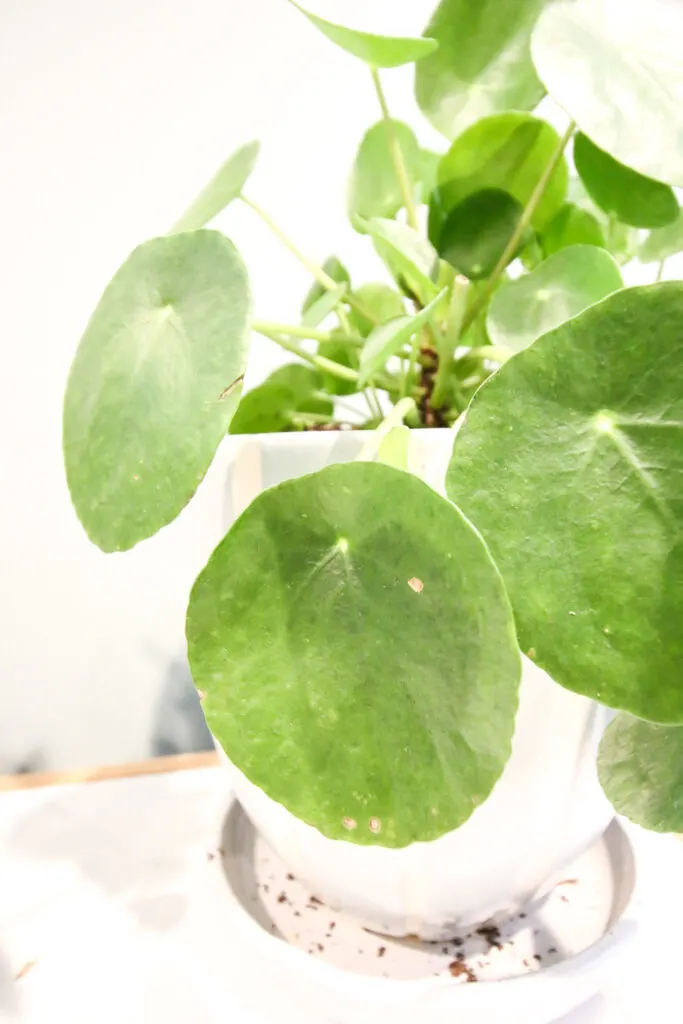
Soggy roots (drainage)
This is highly related to overwatering, but if your pot does not have proper drainage, that can cause curling of the leaves.
A plant in a pot needs big drainage holes to avoid pooling water that can rot the roots. Here’s our guide on how to drill holes in a ceramic pot!
Too much sun
Too much sun can dry out your plant and make the leaves wilt and look sad. If the leaves start to curl downward, it could indicate it’s getting too much sun.
Check the soil – is it very dry and hard? If so, you will want to break it up a bit or even add fresh potting mix before watering.
Move you plant from south facing windows to west or east facing windows for gentler light!
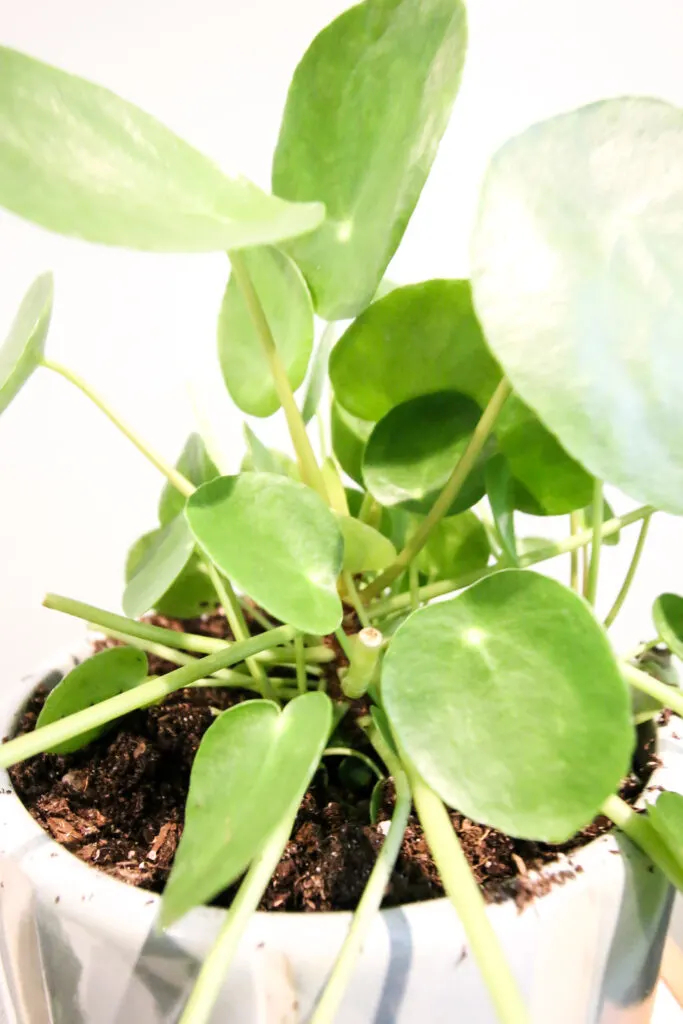
Humidity
Pilea love humidity! If the air is very dry, you can increase humidity levels. Mist your plant, add a humidifier, or place a tray of water nearby!
Lack of circulation
If your air is very stagnant, that could cause the leaves to curl. Consider placing a fan nearby to create a bit of a breeze. This can also help if the soil is growing mold or attracting gnats!
Lack of Nutrients
Plants need nutrients as well as water and light. Pilea can sometimes get a nitrogen deficiency, leading to curling leaves.
Give your pilea a houseplant fertilizer once a month during the warm growing season to help with nutrients!
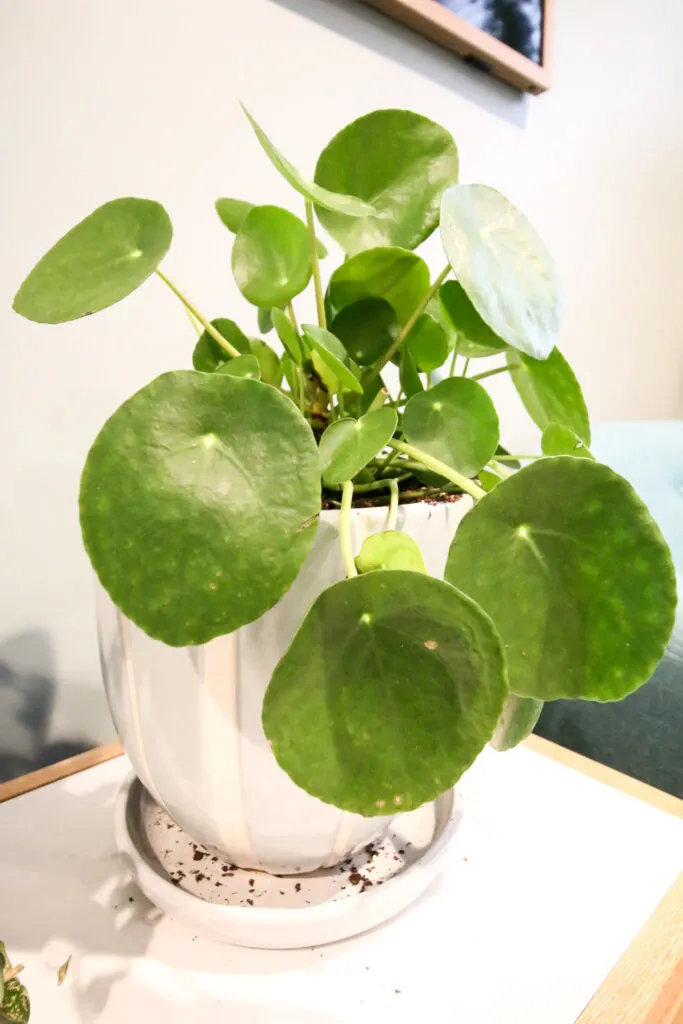
Root problems
The roots are how plants absorb their food. If the plant is root bound, the roots are too crowded in the pot and can’t get enough nutrients. Move it to a pot 1-2 inches larger and throw in some fresh potting soil while you are at it!
If the plant has been over watered, it could have root rot. The roots would be black, mushy, and stinky. Remove rotten roots and repot in fresh soil.
Pests
Pilea don’t tend to get pests too often but they can get more basic pests like spider mites. Look under the leaves for signs that bugs have been nearby.
Your best bet is to separate a buggy plant from other plants, treat with neem oil, and cut off any leaves that are very infested.
More about Pilea plants
- Pilea care guide
- Pilea Dark Mystery Plant Care Guide
- How to propagate pilea from plantlets
- Why are my pilea leaves turning yellow?
- Common pilea peperomioides problems
- How to encourage pilea to grow pups
- What to do if your pet ate your pilea
- Why are my pilea peperomioides leaves curling?
Any more questions about pilea?!
Thanks for reading!


Hey there, I’m Morgan, a houseplant enthusiast from sunny Charleston, South Carolina. Growing up surrounded by my mom’s lush orchids and African violets, I discovered the magic of bringing nature indoors. Thanks to the pandemic, I delved deeper into houseplants, discovering their power to uplift moods and transform spaces. I’m here to spill all my secrets, helping you pick the perfect houseplant – and make it happy. Let’s keep your plants alive, together! 😊
